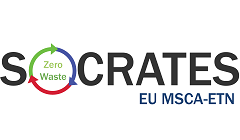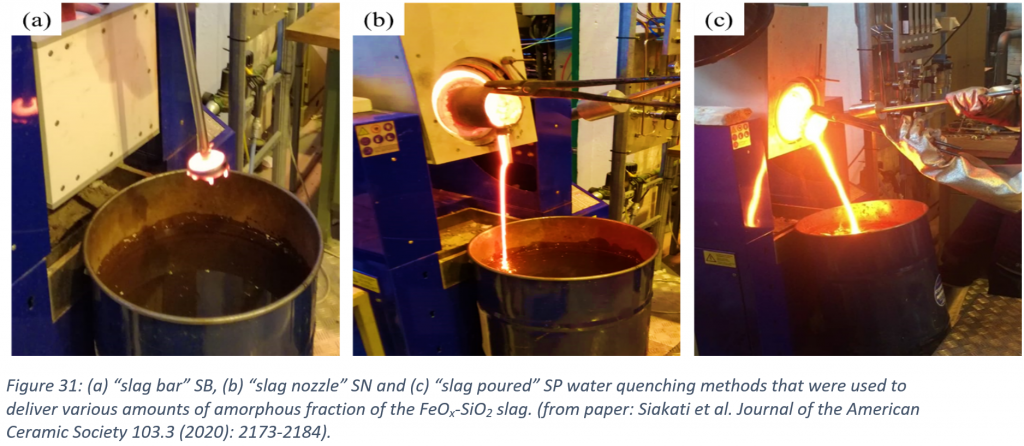
Christina Siakati
ESR12
KU Leuven
My name is Christina Siakati and I am from Greece. I grew up in a beautiful small village, called Emporio, situated near Kozani in north Greece. There, I spent all my school years, till I went to university.
As long as I remember myself, I had a special interest in physics and maths. From a very young age, I knew that I wanted to be a researcher. During the last year of high school, I confirmed my feelings about it.
My teacher in physics used to deliver the course by writing on the board using many chalks of different colors. One day, I was staring the colorful board thinking that it was like a painting, and in that very same moment, the teacher looked at us, pointing at the board and said: ‘‘If someone can imagine this board as a painting, he is qualified for this job’’. I was really shocked because it felt like he was reading my mind. I was sure that I wanted to be a physicist! And I became one!!!
After high school, I moved to a bigger city where I studied Physics at the University of Ioannina in Ioannina. During my studies, the courses that attracted me the most were the ones in the field of experimental and applied physics, more precisely in solid state physics and materials science. Holding onto this thought, I decided to focus on solid state physics for my bachelor thesis and fostered my knowledge in this field by pursuing a MSc degree in Basic Physics with an emphasis on structural, electronic and magnetic properties of solids.
I was (and still am) really passionate about most of the subjects I have studied and I finished both my degrees with flying colors. Currently, I am doing my PhD within the EU MSCA-ETN SOCRATES project at Materials Engineering department of KU Leuven in Belgium. I belong to the research group of Secondary Resources for Engineered Materials (SREMat) coordinated by the Associate Professor Yiannis Pontikes. My research topic is: ’’Iron-rich inorganic polymers derived from residual matrices’’, deepening the knowledge of the structure and formation mechanism of Fe-rich inorganic polymers, following experimental and computational approaches.
Finally, I would like to share with you a quote of Aristotle which is the motto of my academic life:
‘’The roots of education are bitter, but the fruit is sweet’’
If you are interested on my topic and you wish to learn more about it, please don’t hesitate to get in contact with me at: christina.siakati@kuleuven.be
Problem statement & objectives
Aiming to reduce the carbon dioxide emissions associated with cement production, alternative cementitious materials such as alkali-activated materials (AAMs) and inorganic polymers (IPs) have attracted much interest in the last decades. This is related to the fact that ordinary Portland Cement (OPC) production contributes to approximately 8-9% to the total CO2 emissions, despite efforts from the cement industry to find processes and solutions to this challenge. AAMs and IPs can be synthesized by using industrial by-products or residues as precursors (e.g. slags), displaying comparable or even better performance to OPC, while releasing less CO2 during production. However, the final properties are largely controlled (among others) by the intrinsic characteristics of the precursors. Consequently, fundamental insights on the nano-structure of the precursors is of paramount importance since this information can be linked to the reactivity of the slag during alkali activation and the final performance of the resulting binder material.
Methods
A combination of experimental and computational techniques were employed in order to better understand the relationship of the chemical composition-nanostructure-reactivity and therefore the impact on the final performance of the IPs. The main techniques that were employed were: Molecular dynamics simulations, X-ray and neutron pair distribution functions, Mossbauer spectroscopy, isothermal calorimetry, FTIR, XRF, XRD, SEM-EDX etc.
Results obtained
The results of the current thesis provided crucial insights, in particular on the nano-structure of the Fe-rich slag and IPs, reactivity of the slags as well as the impact on the final performance of the IPs. The effect of mineralogical variation of Fe-rich slags – while holding a constant chemical composition – on the resultant IPs was assessed. Three different solidification methods were applied on FeOx-SiO2 synthetic slags, with approximate molar ratio FeO/SiO2 = 1.6, resulting in three different slags in terms of glass content. The results demonstrated that higher cooling rates promoted higher glass formation and faster reaction kinetics when the slags were activated. By using state-of-the-art Mössbauer spectroscopy, it was revealed that all the slags mainly consisted of Fe2+ ions with a minor amount of Fe3+ ions, regardless of the variability in glass content. The binder phase of all un-pulverized inorganic polymers consisted of iron in both Fe2+ and Fe3+ states, after 28 days of curing. After pulverizing them and exposing the powder to air for 28 additional days, the Fe2+ state in the binder transformed to Fe3+. The results thus indicate for the first time that the oxidation state of Fe in the IP binders is dependent on the type of the prevailing curing conditions, regardless of the amorphous content variability (Figure 31). An extra novelty revealed by the compressive strength results is the importance of (the lack of) Ca for the late age strength development. When Ca is present in the slag, the compressive strength increases significantly. Moreover, the local environment of iron remains similar as the CaO/FeO content is increasing. However, precipitation of the Ca(OH)2 phase is likely to be observed for significantly high CaO content, leading to lower compressive strength at the early age but higher compressive strength at the later age. Additionally, using molecular dynamics simulations in conjunction with previously obtained experimental X-ray and neutron pair distribution functions (PDFs), the structural characteristics of (CaO)-FeOx-SiO2 slag were revealed (Figure 32). The partial X-ray and neutron PDFs, the distributions of coordination numbers and the bond angles are obtained, revealing new information regarding the local structure that was impossible to be discerned experimentally.
Conclusion & Outlook for further work
The importance of complementing experimental with computational work is evident in this investigation, which has allowed for a detailed understanding of the slag structure and its link to reactivity and the final performance of IPs. This is a step forward towards designing optimal slags, created to fulfil the needs of alkali-activated materials. This knowledge has a crucial strategic importance for metallurgical companies wanting to optimize the quality (i.e. value) of their slags, with a substantial and direct positive impact to the environment and society. The study of samples with Al2O3 present in the slag system is the topic of ongoing and future work.



